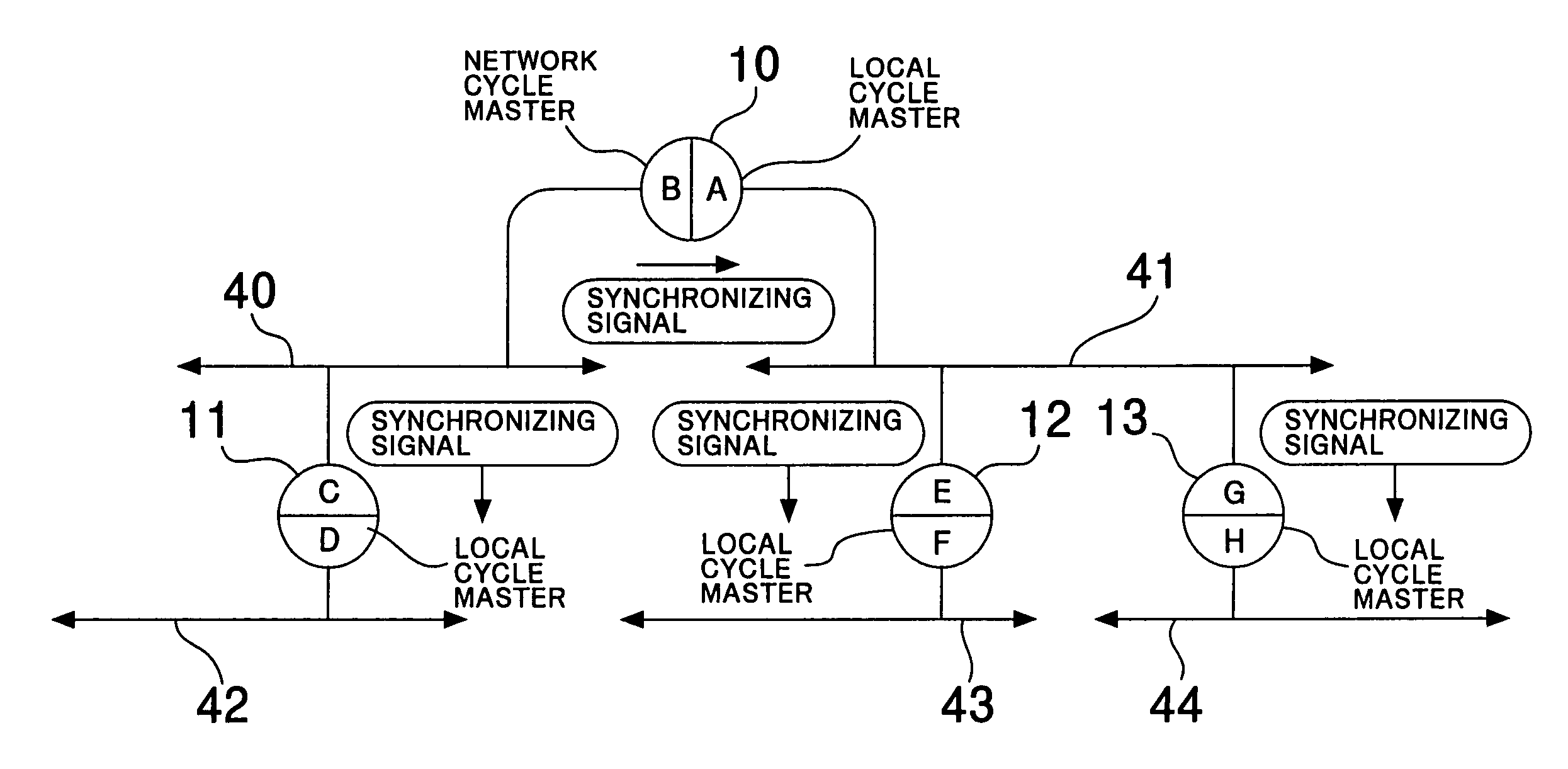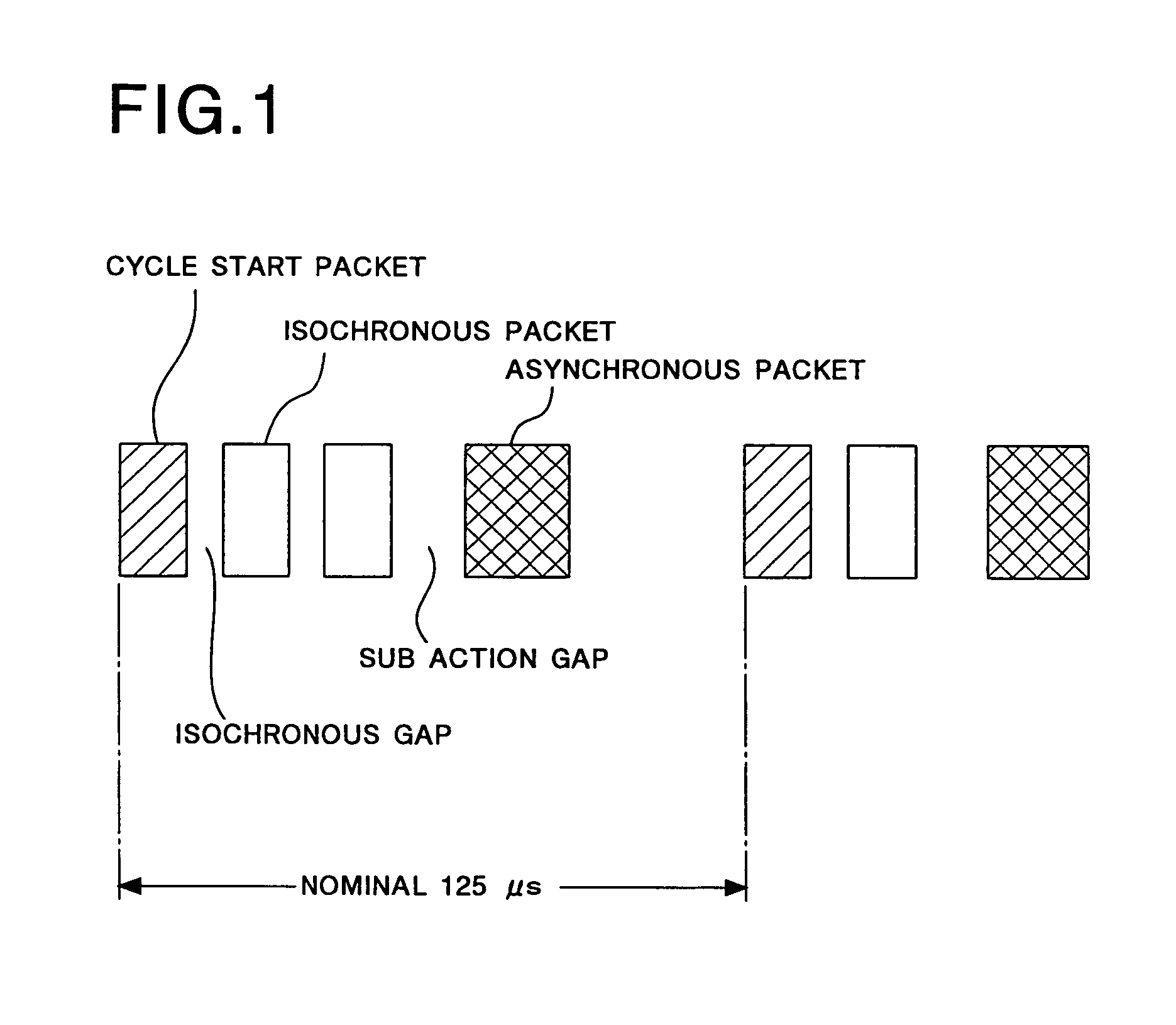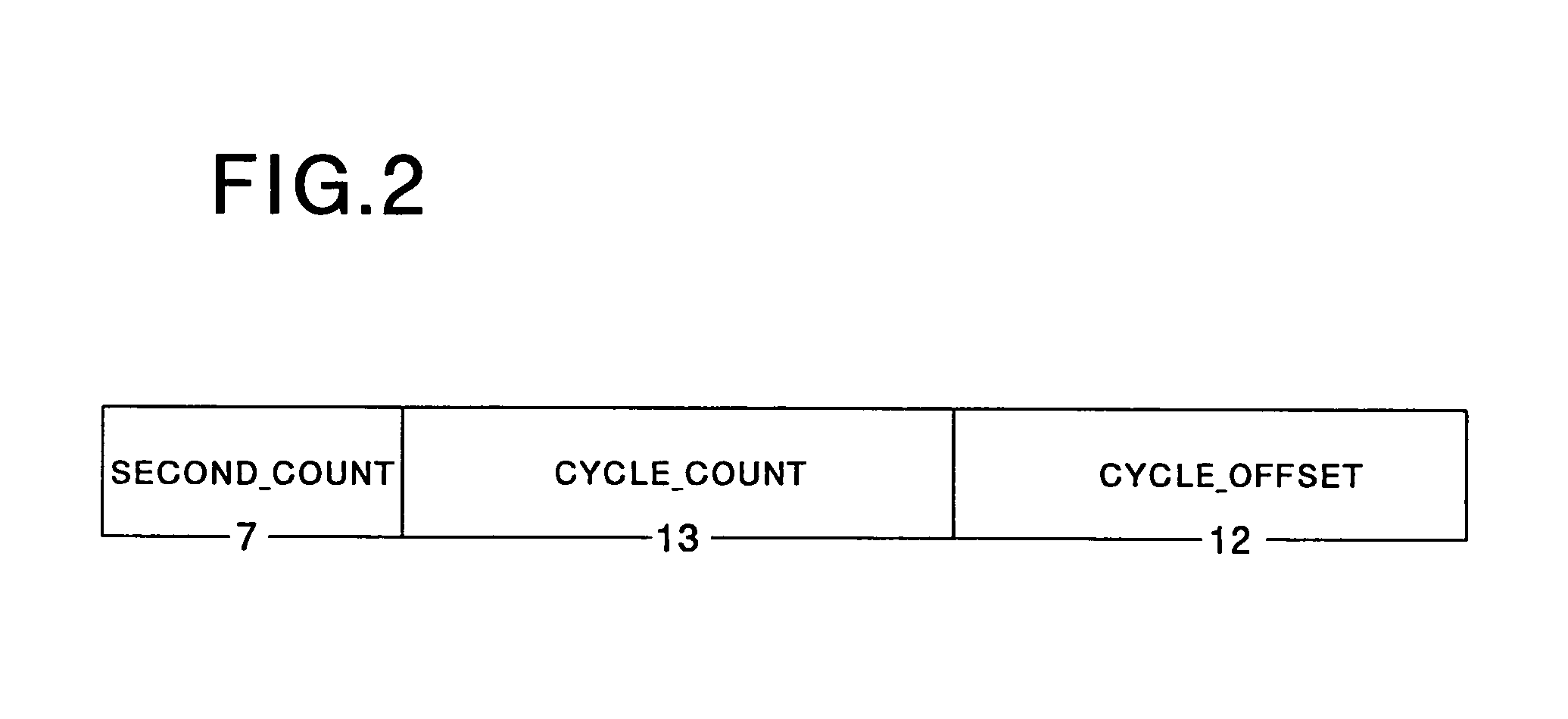Network synchronization system and network synchronization method
a network synchronization and network synchronization technology, applied in the field of network synchronization system and network synchronization method, can solve the problems of network synchronization method and consumption of isochronous transfer resources
- Summary
- Abstract
- Description
- Claims
- Application Information
AI Technical Summary
Benefits of technology
Problems solved by technology
Method used
Image
Examples
Embodiment Construction
[0044]FIG. 4 shows a network to which a network synchronization method according to the present invention is applied. Referring to FIG. 4, five IEEE 1394 buses 40 to 44 are connected in a tree-like configuration by four bridges 10 to 13 to form a single network. It is to be noted that, in FIG. 4, each circle represents a bridge, and one half of the circle represents a portal. In other words, each of the bridges 10 to 13 has two portals. The portals are named A to H for the convenience of description.
[0045]In the network shown, the portal B of the bridge 10 is set as a network cycle master. The network cycle master functions as a reference clock source for the entire network and also as a cycle master for the IEEE 1394 bus 40 to which the network cycle master itself is connected. In this condition, in each of those buses to which the network cycle master is not connected, a portal which has the smallest hop number to the network cycle master is set as a local cycle master. The local ...
PUM
 Login to View More
Login to View More Abstract
Description
Claims
Application Information
 Login to View More
Login to View More - R&D
- Intellectual Property
- Life Sciences
- Materials
- Tech Scout
- Unparalleled Data Quality
- Higher Quality Content
- 60% Fewer Hallucinations
Browse by: Latest US Patents, China's latest patents, Technical Efficacy Thesaurus, Application Domain, Technology Topic, Popular Technical Reports.
© 2025 PatSnap. All rights reserved.Legal|Privacy policy|Modern Slavery Act Transparency Statement|Sitemap|About US| Contact US: help@patsnap.com



